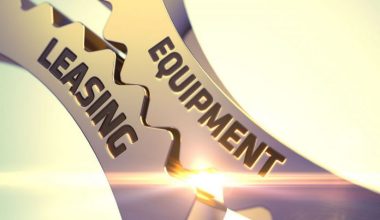A balloon payment is a one-time payment that is much larger than all previous payments made at the end of a loan’s term. A series of fixed payments are made to pay down the loan’s balance on installment loans without a balloon option. A balloon payment mortgage allows borrowers to lower their fixed monthly payments in return for a higher payment at the conclusion of the loan term. In general, these loans are suitable for borrowers with solid credit and a steady income.
What Is the Meaning of Balloon Payment?
A balloon payment brings a short-term balloon loan to a close. Balloon payments are usually at least twice as large as prior payments paid throughout the term of the loan. The term ‘balloon’ refers to the inflated magnitude of the ultimate payment.
Balloon loans can be used for any sort of loan, including mortgages and commercial loans. They’re more widespread in commercial lending than in consumer lending, though. This is because, in comparison to the average homeowner with a 30-year mortgage, businesses are better equipped to afford a high balloon payment at the end of the loan period.
How Does a Balloon Mortgage Work?
A balloon mortgage’s particular terms are determined by the lender and the loan. A balloon note usually has fixed payments for a set period of time, followed by a balloon payment. Because balloon mortgage payments aren’t fully amortized, they’re usually small in the beginning. Amortization is the process of repaying a loan with installments that reduce the outstanding balance and pay it off over time. In some circumstances, interest-only payments may be made within the defined time.
Balloon Payment Mortgages
Mortgages with balloon payments are divided into two stages. The borrower makes monthly payments over a certain length of time during the initial phase. For this first period of the loan, interest rates are fixed.
The loan is reset in the second phase with a fresh amortized mortgage at market rates. This second payment plan includes the balloon payment that would have been owed. It’s worth noting, though, that with some two-step mortgages, the reset process can be skipped. The mortgage may not be reset if the borrower’s income has changed significantly or if he has been unable to make timely payments. The balloon payment would be due in this situation.
Commercial Balloon Payment Loans
Businesses, like individuals, use balloon loans to purchase commercial real estate. To bridge the gap for short-term finance, business owners may use balloon loans. Moving into a new office while waiting for the current one to be sold is one example. The funding for the massive balloon payment would come from the present office sale in this example, giving the company some breathing room before the transaction is finalized.
Advantages of Balloon Payments
The main advantage of a balloon payment loan is the rapid availability of funds. This is advantageous for entrepreneurs or start-up enterprises who have secured long-term financing. Fixed repayments are smaller when a business is just getting started, but they can be repaid with a bigger sum once the financing is completed.
Traditional loans typically have longer periods than balloon loans. This makes them advantageous to borrowers who require a short-term cash injection and can repay the loan within a few months or years.
Disadvantages of Balloon Payments
The biggest disadvantage of balloon payments is that they include some risk, especially when it comes to the housing market. There’s a chance that property values will fall if you take out a balloon payment mortgage. Homeowners may not have the good home equity they expected in this scenario. This would put them in a tough position to pay off a large balloon payment, possibly resulting in loan default.
Balloon payment loans taken out to pay for autos or enterprises have a similar risk. This form of loan is contingent on the borrower’s capacity to repay a considerable sum at the end of the term. Because a borrower’s financial conditions can change, the lender must conduct additional due diligence.
Finally, the prices of long-term loans are frequently greater, especially if you’re taking out an interest-only loan.
How Does a Balloon Loan Differ From Other Loans?
Balloon mortgages differ from other loan kinds in a few ways, in addition to having a lump-sum payment payable at the end of the loan.
#1. Lenders
The sort of lenders that offer balloon loans is one big variation. A balloon payment is one of several elements that aren’t permitted in most qualifying mortgages or loans that meet certain criteria and are considered stable. As a result, balloon payments aren’t allowed in many mortgage packages, and they’re usually only available from small or private lenders, or for specific forms of lending, such as construction.
#2. Qualification Criteria
For balloon mortgages, eligibility restrictions and the underwriting process may differ. Because balloon notes aren’t eligible for mortgages, the lenders who provide them set their own restrictions. Non-qualified mortgages, such as balloon notes, have more stringent restrictions for borrowers, such as higher credit scores and down payments.
#3. Interest Rates
The interest rates on balloon mortgages are another way they differ from regular loans. According to Mazzara, balloon mortgage rates are often higher since lenders are taking on a lot of risks.
Are Balloon Payments a Good Idea?
When you have a balloon payment for your loan, you will pay a higher overall interest rate. This is due to the fact that over the entirety of the loan term, you will be responsible for paying interest on the amount of the loan’s residual value or balloon payment. One of the most significant advantages of using an RV or balloon payment is that it results in reduced monthly installments.
Why Do People Take Out Mortgages with Balloon Payments?
Why Should You Consider a Balloon Mortgage? A balloon mortgage is one option available to homeowners who anticipate occupying their current residence for a relatively little amount of time. Because it is paid off in a few years rather than in 20 or 30 years like a normal mortgage, it comes with lower monthly payments and a considerably lower overall cost. This is because it is paid off much more quickly.
What Happens After Balloon Payment?
In some contexts, the balloon payment is also referred to as the guaranteed minimum future value (GMFV). It’s a rough calculation of how much the car will be worth when the lease or loan comes to an end. If you return the car at the end of the lease arrangement, the lender will be responsible for any financial loss that results from the vehicle’s decreased value.
How Big Can a Balloon Payment Be?
Although the purpose of balloon payments is to pay off a major portion of your debt at the conclusion of the loan term, these payments are typically capped. In most cases, the maximum amount that can be paid in balloon payments is limited to fifty percent of the entire amount owed. Therefore, if you are interested in purchasing a car that costs $30,000, your balloon payment couldn’t be more than $15,000.
How to Get Rid of a Balloon Payment Mortgage
Mazzara, who has assisted borrowers in transitioning from balloon notes to more secure loans, believes that getting out of a balloon mortgage can be difficult. However, there are a few options. Some options for getting out of a balloon payment mortgage are listed below.
#1. Refinance the Balloon Mortgage
Refinancing the loan to another mortgage before the balloon payment is due is one strategy to avoid a balloon payment. Mazzara says. “We move a lot of individuals out of those types of loans and assist them to navigate through it through refinance.”
#2. Pay off the Balloon Payment
Making the balloon payment will, of course, eliminate the balloon note. Saving up the lump sum within the set payment period, using expected funds, or borrowing the money to make the balloon payment are all options for making the balloon payment.
#3. Sell the Home
If a borrower is unable to make the balloon payment by the due date, the property can be sold to avoid defaulting on the debt.
#4. Pay More During the Initial Period
Paying more during the initial period will reduce the principal owed at the conclusion of the loan term, assuming there is no prepayment penalty.
#5. Negotiate an Extension
If a homeowner is unable to repay the balloon payment on schedule, an extension may be possible. This alternative, however, is likely to come with hefty fees and may only result in a short-term extension.
What Happens to Balloon Payments at the End of the Loan Term?
When your car loan expires, say after 3 or 5 years, the balloon payment will most likely be due. If you are unable to pay the full sum in cash, you may be able to do so by selling the vehicle.
You may owe more than you sell your automobile for, depending on how much it has depreciated and how much you owe as part of the final payment. Longer loan durations frequently have lower maximum balloon percentages because of this.
The average car on the road is 10.1 years old, according to the Australian Bureau of Statistics. So, once your loan term is done, odds are you’ll want to keep your automobile for a few more years. Paying off the balloon amount, on the other hand, may provide an opportunity to upgrade to a newer, safer, and technologically advanced vehicle.
Should You Take Out a Balloon Mortgage?
The risks of balloon mortgages outweigh the benefits for most people. “I don’t believe owner-occupied properties should be eligible for balloon notes,” Mazzara argues. “I believe they would only be for a savvy real estate investor who knows how to navigate the market and is comfortable with the balloon note terms,” she says.
Here are several instances in which a mortgage with a balloon payment may be beneficial.
#1. You Can Already Afford the Balloon Payment
Borrowers who have the funds to make the payment may choose to invest or spend the money until the balloon note payment is due in some instances. Taking out a balloon mortgage is less hazardous in this scenario because you already have the funds to make the lump-sum payment.
#2. You’re Expecting a Lump Sum Before the Balloon Payment Is Due
If you’re expecting an inheritance, bonus, or another lump sum, a balloon mortgage may make sense if you’ll be able to afford the balloon payment when it comes due.
#3. You’re Expecting an Income Increase
Borrowers who predict a large increase in their income in the near future can use a balloon loan to buy a house while their income is still low. A balloon mortgage, for example, can get you into a home without waiting if you work in a job where your salary is low in the first few years but will climb dramatically over time.
#4. You’re Only Looking For Short-Term Financing
Investors who want to flip a house frequently use balloon mortgages to purchase, repair, and sell a home quickly.
#5. You Plan to Live in the Home for a Short Amount of Time
For homeowners who expect to own the property for a short period of time and then sell it before the lump sum is due, a balloon payment may make sense. If the value of your home drops during that time, you may have to make up the difference between what you sell it for and what you owe on the loan.
Can You Avoid Balloon Payment?
If you presently have a balloon payment, the most efficient approach to get rid of it is to adopt one of the strategies that are listed below: You should use any extra money you have toward paying off your obligations as quickly as possible. Create a savings account so you can put money aside for the time when the balloon payment is due.
How Do You Beat Balloon Payment?
At the conclusion of the loan term, balloon payments are required, and they must be paid in one continuous sum. However, if your request is accepted, you can also sell or trade-in your vehicle and use the proceeds to pay off the balloon payment and/or refinance a new loan. Another option is to refinance or “rollover” the payment into a new loan. This option is subject to approval. May 25, 2018
Is Balloon Payment a Lump Sum?
A balloon payment is, in most cases, a one-time payment made at the end of the term of a loan that is an amount paid in full and is significantly larger than the regular payments. When a loan is not amortized, the borrower is subject to balloon payments. Instead, the borrower agrees to forego a costly monthly payment in return for a larger payment at the conclusion of the duration of the loan.
Balloon Mortgage Alternatives
If a balloon mortgage isn’t right for you, here are some more options to think about.
#1. Construction-To-Permanent Loans
People who wished to finance a freshly built home had to get interim construction financing from a bank in the past. However, lenders can now make one-time building loans.
During the construction period, these loans are often interest-only loans that convert to mortgages with principal and interest payments once the development phase is completed. This option may be a better choice than a loan with a balloon payment because it is less risky.
#2. Adjustable-Rate Mortgages
A balloon loan has some of the same advantages as an adjustable-rate mortgage (ARM), but it comes with significant hazards. At the outset of the loan, ARMs usually have lower interest rates and monthly payments. When buying a home, homebuyers can usually qualify for a higher mortgage.
Unlike balloon loans, however, an ARM’s whole sum does not come due at the same time. Instead, after an initial fixed time, the interest rate and payments adjust during the loan term.
To determine if the initial savings are worth the risk, ask your lender to estimate the highest payment you could incur under the ARM.
#3. Fha Graduated Payment Mortgages
Homebuyers who take out a Federal Housing Administration (FHA)-backed progressive payment mortgage will see their payments rise over time. These loans are great for folks who want to buy a home right now but can’t afford the monthly payments. Because it includes built-in features that help ensure borrowers can afford the higher payments as they arise, the loan program is a safe alternative to balloon mortgages.
#4. Longer-Term Mortgage
When compared to a loan amortized over a shorter period of time, a mortgage with a longer duration, such as 40 years, will have a cheaper payment. As a result, this may be a more solid option than a balloon loan. However, because you’ll be making payments over a longer period, you may end up paying more interest throughout the life of the loan. Furthermore, as compared to loans with shorter maturities, interest rates are often higher.
Conclusion
When it comes to financing a new car, adding a balloon payment to your loan is just one of the many decisions you’ll have to make. Other considerations include the quantity of the auto loan deposit, the loan conditions, and more. Balloon payments will save you money in the long run by lowering your monthly payments, but you must ensure that you can pay the balloon payment at the conclusion of the loan period. If you’re ready to get behind the wheel of your next vehicle, contact one of our lending consultants now to learn how to be pre-approved for a car loan.
FAQs
Is a balloon payment legal?
A loan with a balloon payment clause is not illegal in and of itself. Various laws have been implemented by the federal and state governments to safeguard consumers from being scammed by such a loan.
How do you pay off a balloon payment
When the balloon payment is due, you have the option of paying it off with a new loan. To put it another way, you remortgage.
What happens if I can't pay my balloon payment?
If you are unable to make the balloon payment, you might consider refinancing your car loan. You’ll be able to deal with your balloon payment while also keeping your car if you refinance.






